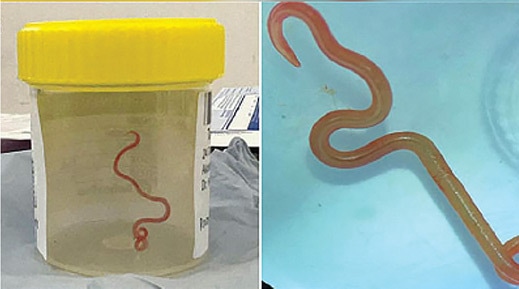Australian doctors find live parasitic worm in woman’s brain
Australian doctors find live parasitic worm in woman’s brain
SYDNEY: A parasitic roundworm typically found in snakes was pulled “alive and wriggling” from a woman’s brain in a stomach-churning medical first, Australian doctors said on Tuesday.
Baffled doctors performed an MRI scan on the 64-year-old Australian woman after she began suffering memory lapses, noticing an “atypical lesion” at the front of her brain.
It was an eight-centimetre (three-inch) roundworm, called Ophidascaris robertsi, which researchers said was a common parasite in kangaroos and carpet pythons — but not humans.
“This is the first-ever human case of Ophidascaris to be described in the world,” said infectious disease expert Sanjaya Senanayake.
“To our knowledge, this is also the first case to involve the brain of any mammalian species, human or otherwise.”
Patient, who hails from New South Wales, is said to be recovering well after the surgery
The woman, who had been treated for but not fully recovered from pneumonia, was admitted to a hospital in January 2021 after three weeks of abdominal pain and diarrhoea, which progressed to a dry cough and night sweats, according to findings published in the journal Emerging Infectious Diseases.
She was re-admitted to a hospital three weeks later when her condition did not improve, and underwent various treatments until brain scans revealed a lesion and an open biopsy was performed in June 2022.
“It was definitely not what we were expecting. Everyone was shocked,” BBC reported, while quoting the operating surgeon Dr Hari Priya Bandi.
“Everyone was shocked. And the worm that we found was happily moving, quite vigorously, outside the brain,” she said.
“When you operate on someone’s brain and you take a biopsy of something, you never expect to encounter something living,” Senanayake said.
Similar stories














Comments are closed.